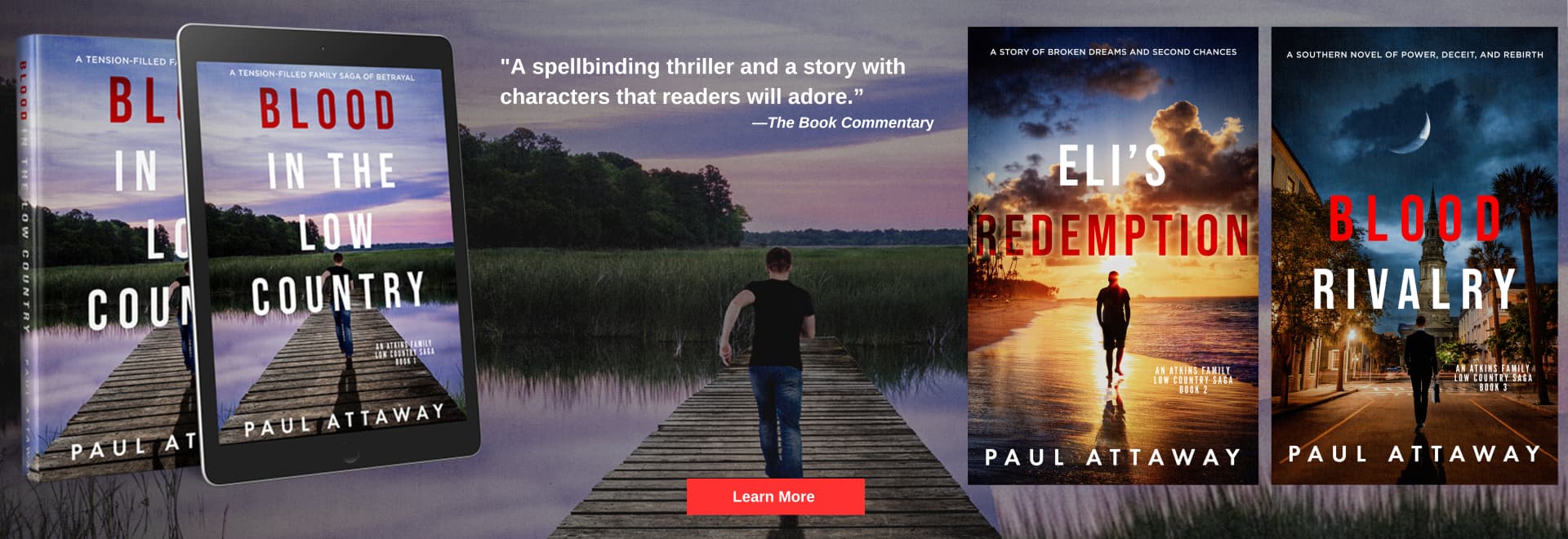
Welcome!
Character driven books with intricate plots make for great reading. I strive to write these types of books. I give the reader enough backstory, so they know what drives the character. Why is the character the way they are? Nature or Nurture? I believe the answer is both. We’re a product of who we were made to be and of our life experiences.
Understanding a character’s backstory gives the reader a glimpse of how the character becomes who they are and thus how we can expect them to act or react to what happens in the story. Understanding this about a character is what sets up character arc in a story.

The Atkins Family Lowcountry Series
A series of interlocking stories surrounding the lives of two brothers, Eli and Walker Atkins, and the world they live in – Charleston, South Carolina. In Blood in the Low Country, readers meet Monty and Rose Atkins, the boys’ parents. Monty and Rose are living the American dream but ugly truths they’ve kept buried for years surface and explode, forever changing the trajectory of the lives of these two young men. In Eli’s Redemption, readers watch Eli deal with the dramatic, life-upending events of Blood in the Low Country as he fights to save his life and the lives of those closest to him.
Throughout this series, readers will encounter a cast of fascinating characters, some taken from the pages of history and others from Attaway’s own memories and life experiences, characters you are sure you’ve met yourself, characters who make life rich and wonderful and, at times, dangerous. But through it all, a common theme emerges – the challenges to and joys
of living free.

